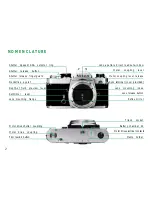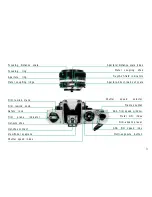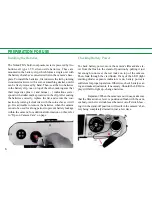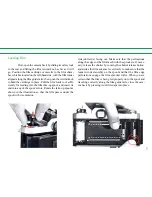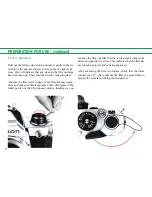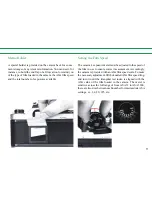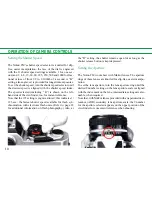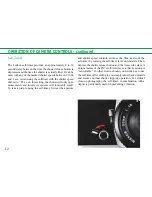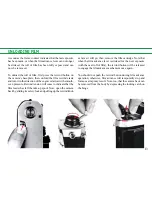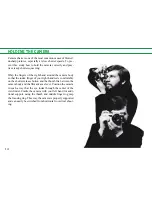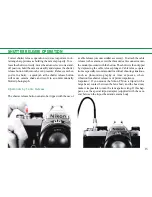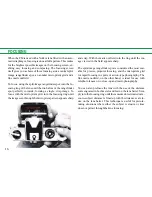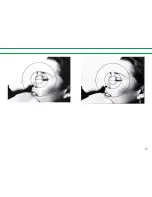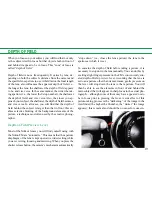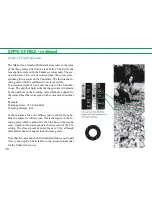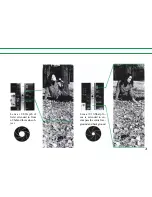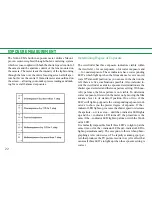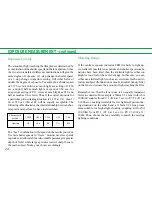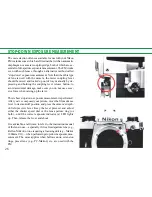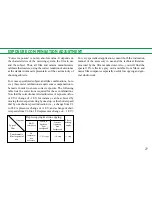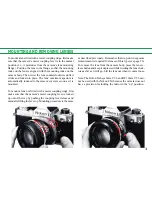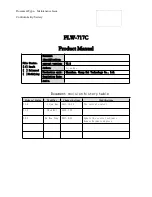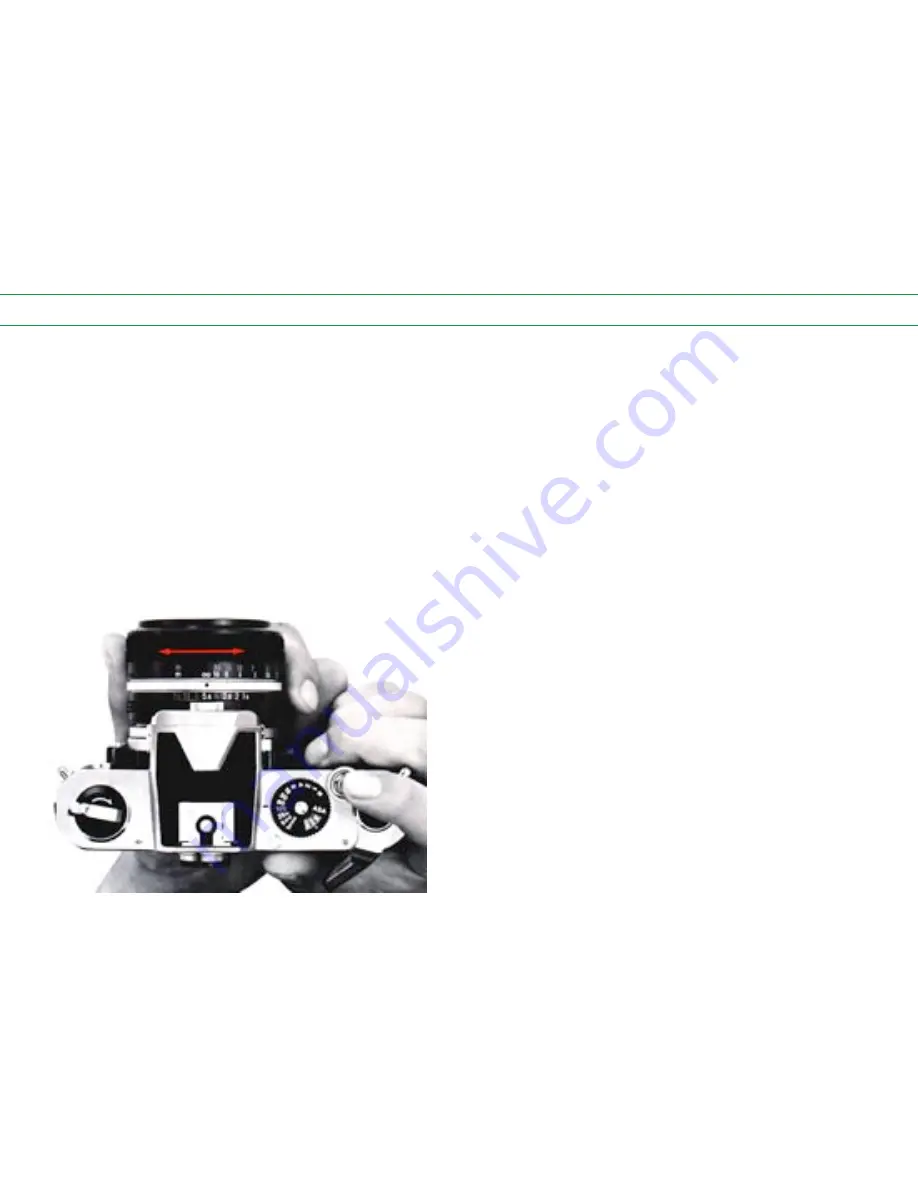
16
FOCUSING
When the FM is used with a Nikkor lens fitted with an auto-
matic diaphragm, focusing is done at full aperture. This makes
for the brightest possible images on the focusing screen, en-
abling easy focusing and composing. The focusing screen
itself gives you a choice of three focusing aids: a central split-
image rangefinder spot, an annular microprism grid and a
fine matte outfield.
To focus, using the split-image rangefinder spot, turn the fo-
cusing ring of the lens until the two halves of the rangefinder
spot perfectly coincide, forming a single, crisp image. To
focus with the microprism grid, turn the focusing ring until
the image seen through the microprism pattern appears sharp
and crisp. With the matte outfield, turn the ring until the im-
age viewed in the field appears sharp.
The split-image rangefinder spot is considered the most suit-
able for precise, pinpoint focusing, and the microprism grid
for rapid focusing in sports or action-type photography. The
fine matte outfield, on the other hand, is ideal for use with
telephoto lenses or in close-up and macrophotography.
You can also prefocus the lens with the use of the distance
scale engraved in both meters and feet on the lens barrel. Sim-
ply turn the focusing ring until the measured or estimated cam-
era-to-subject distance is lined up with the distance scale in-
dex on the lens barrel. This technique is useful for picture-
taking situations where either the subject is elusive or time
does not permit throughthe-lens focusing.

